As the decade comes to a close, I’ve been reflecting on the last ten years of Magic history. Specifically, I’ve been thinking about all the new game mechanics that have been introduced. Did you know that Wizards has produced over a hundred new mechanics since 2010? (I counted!)
But what mechanics stand above the rest? The ones that created the most design space? Or the ones that enabled the most fun gameplay experiences?
After reviewing the multitudes of mechanics, I’ve created a top ten list. It was tough, as there were a lot of great ones!
While only ten mechanics made the cut, many others introduced important concepts to Magic design. So, shout-out to Dominaria’s historic mechanic for giving us a new way to group card types. And a nod to the host and augment mechanics in Unstable for giving us new ways to play with card borders.
With that said, let’s dive in!
#10 — Goad
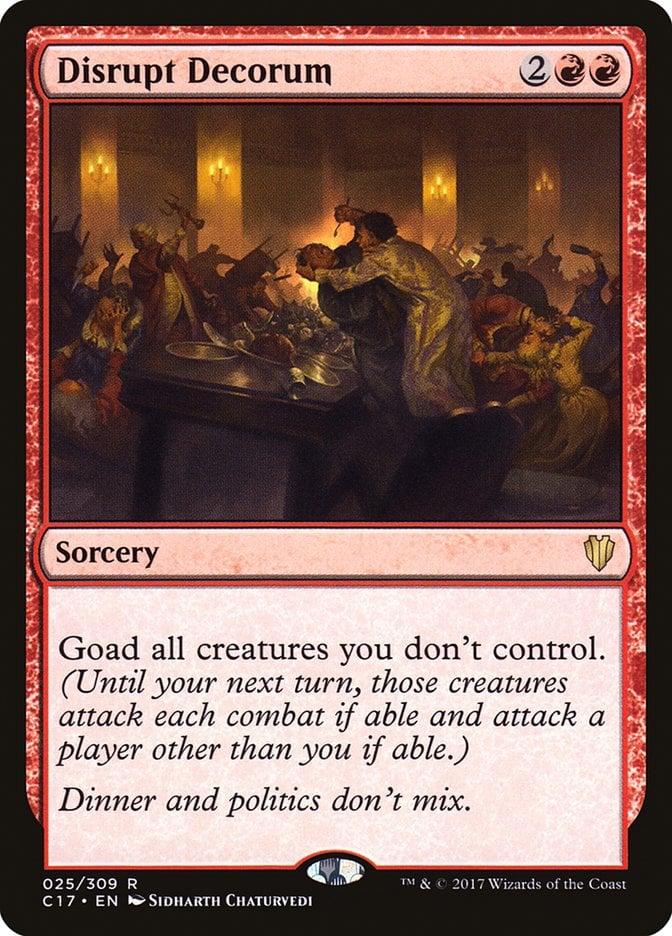
With the popularity of Brawl and Commander, multiplayer Magic is more prevalent than ever. But you know what’s unfun about multiplayer free-for-all Magic? You have more incentive to “turtle up” than to attack other players, so as not to open yourself up to an attack from someone else. This conundrum leads to board stalls, making already-long games last even longer.
At least Commander lets you play with many powerful effects that can help end games. But what about a multiplayer Limited environment like Conspiracy: Take the Crown, where you only have a few hundred cards at your disposal? Enter goad.
Goad elegantly answers the problem of stalled board states. By making one player attack another (and not you!), you can set two players back without spending any resources. When other players start going after one another, you can more easily find a path to make your own attacks.
The goad mechanic’s ability to break up board stalls has earned it the status of unofficial evergreen multiplayer mechanic. After Conspiracy: Take the Crown, goad appeared again in Commander 2017 and Commander 2019. I expect goad to turn up again soon in free-for-all multiplayer Magic environments.
#9 — Infect
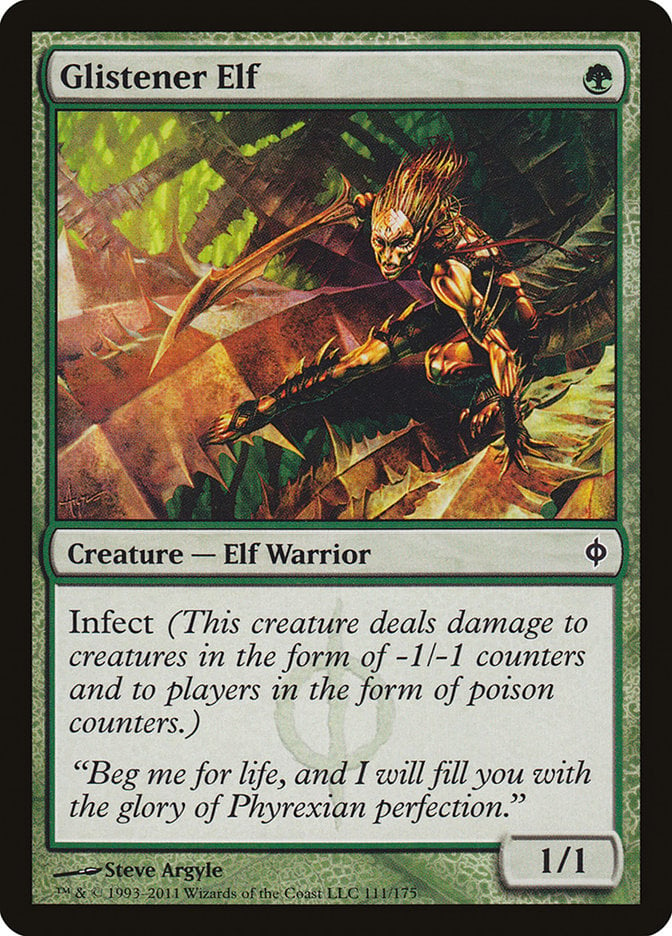
While some players dislike this mechanic, there are many more that love it! But it’s not just popularity that puts infect a cut above many other mechanics – it combined two existing concepts into one cohesive, well-executed whole.
When wither was introduced in Shadowmoor, so was the concept of dealing alternative damage. Infect took that concept and married it with poison counters, which lacked a consistent keyword effect.
It made sense for Phyrexians in Scars of Mirrodin to spread their plague. Wither might have made sense as a returning mechanic, but the flavor concept of “compleation” was much stronger. It especially would have felt weird if players received poison counters, but creatures took normal damage.
Infect cleanly represents the experience of creatures poisoning anything they touch. Players and creatures retain these counters turn after turn, leading to the feeling of “death by 1,000 cuts.”
Lastly, infect revitalized an alternate win condition that is distinct from the more popular alternate win condition of milling. Milling is naturally uninteractive – most mill effects move cards straight from the library into the graveyard without affecting the battlefield. Infect, on the other hand, requires interaction via creature combat, so the defending player has more ways to respond. Infect, with its unique playstyle, gives fans of alternate win conditions a compelling choice to consider beside milling.
If I were to “pick my poison,” I’m much happier to lose games by an opponent’s alternate win condition. Infect gave poison players more tools to win in their favorite way, especially in Commander.
#8 — Saga
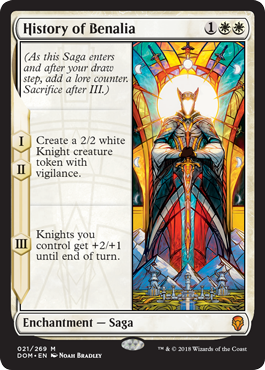
Enchantments usually last indefinitely. If you wanted a one-time effect, you’d use instants or sorceries. But what about something in-between? The flashback and rebound mechanics allow you to cast spells again. Retrace lets you reuse those spells even more times. But what about ever-evolving magic? That’s where sagas come in.
The concept of an enchantment that only lasts for a few turns is great. We’ve seen this before with cumulative upkeep or the Ordeal cycle in Theros. But sagas did something a bit different: what if the enchantment’s effect changed every turn? Aha!
This evolution sounds great mechanically, but it needed a flavor fit. The concept of telling a story, which naturally changes over time, complements the gameplay perfectly. In Dominaria, sagas told the story of the plane’s past; but all stories come to an end, and so do sagas.
Some card design ideas need a few turns to play out, and sagas allow for a reusable tool in this design space. I imagine future cards will tell the tales of characters rather than planes. Imagine a bard strumming a tune on their lute and telling the stories of heroes and villains.
I’m looking forward to Theros: Beyond Death’s spin on sagas!
#7 — Adventure

Once upon a time, Invasion introduced split cards to Magic. These cards gave you two options and allowed you to choose A or B. Then Dragon’s Maze’s fuse mechanic gave us a new set of choices: A, B, or both! A few years later, we had Amonkhet split cards with aftermath: A, then B, in that order. And now we have Throne of Eldraine’s adventure mechanic.
It might seem strange to lump adventure cards in with split cards – after all, adventure cards look and function differently. But adventure cards are secretly a form of split cards! Adventure is like a choice between a whole aftermath card or just the side with aftermath: “A then B” or “just B.”
Creatures with adventure provide more freedom than split cards – for both players and designers. The adventure spell and the creature don’t need to have a specific naming scheme, just a loose, flavorful connection. And the adventure subtype makes it easier for players to understand how the mechanic works. The creature is away on an adventure, and it will eventually come back!
This flexibility and ease of understanding means there’s a lot of design space to explore. Speaking of explore, a return to Ixalan can bring adventuring pirates! Adventure was a great flavor match for Knights in Throne of Eldraine. Perhaps we’ll see adventures make their return in 2020’s Zendikar Rising?
#6 — Partner
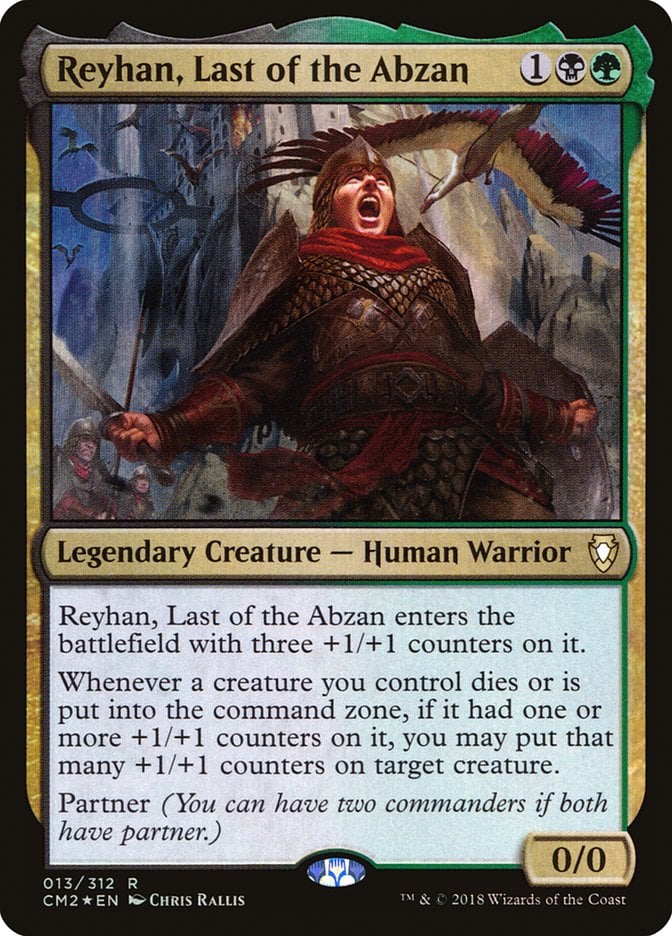
The release of Commander 2016 gave us fifteen partner cards, all of which are two colors. This mix-and-match gameplay has become quite popular: Oathbreaker, a breakout format that combines Planeswalkers with instants and sorceries, is a testament to power of partnerships.
Partner also introduced the concept of “half commanders.” Usually, in Commander, your deck’s focal point is either on the battlefield or it isn’t. But partner allows your deck to have two focal points – you can use one or the other, or both at once! Battlebond explored this concept with the “partner with” variation of partner on legendary creatures.
There isn’t much room currently for creating your own unique pairings, but that could become a possibility in the future. Having another set of fifteen mono-color partner cards would create many permutations of new Commander decks!
#5 — Monarch

Like goad, monarch enriches multiplayer Magic games, albeit in different ways.
Here are the benefits of the monarch mechanic:
- You don’t need to pick on another player to become the monarch
- If an opponent is the monarch, it’s easier for everyone to decide whom to attack
- Card-draw helps make games end faster
- It works in one-on-one games, too!
Some Commander players have entertained the notion of starting the game with a monarch token in play. This may never become an official rule, but it sounds like a fun variant for casual games.
I imagine a future Brawl/Commander product series may feature monarch as a minor theme across the decks. And, of course, a third Conspiracy set would probably welcome monarch, and perhaps a variation on the mechanic.
#4 — Proliferate
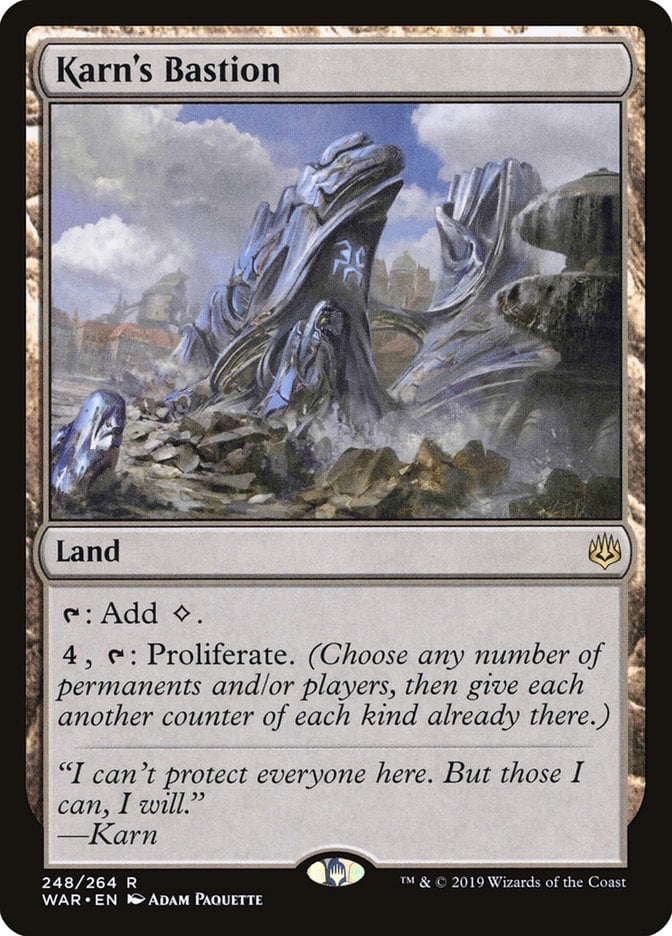
Proliferate played an important role in Scars of Mirrodin block. It gave poison-strategy players a way to finish the game without infect creatures, and it allowed colors with little access to poison (namely blue) to synergize with it. This enabled more diverse poison strategies when infect was mostly on black or green cards.
But proliferate has done so much more for Magic than enabling poison strategies. It was useful in War of the Spark, where both +1/+1 counters and loyalty counters were central mechanics. If energy and experience counters ever return, proliferate may return along with them. Proliferate is a strong tool for any strategy involving counters, and it should be considered for inclusion in any counter-focused set.
#3 — Treasure
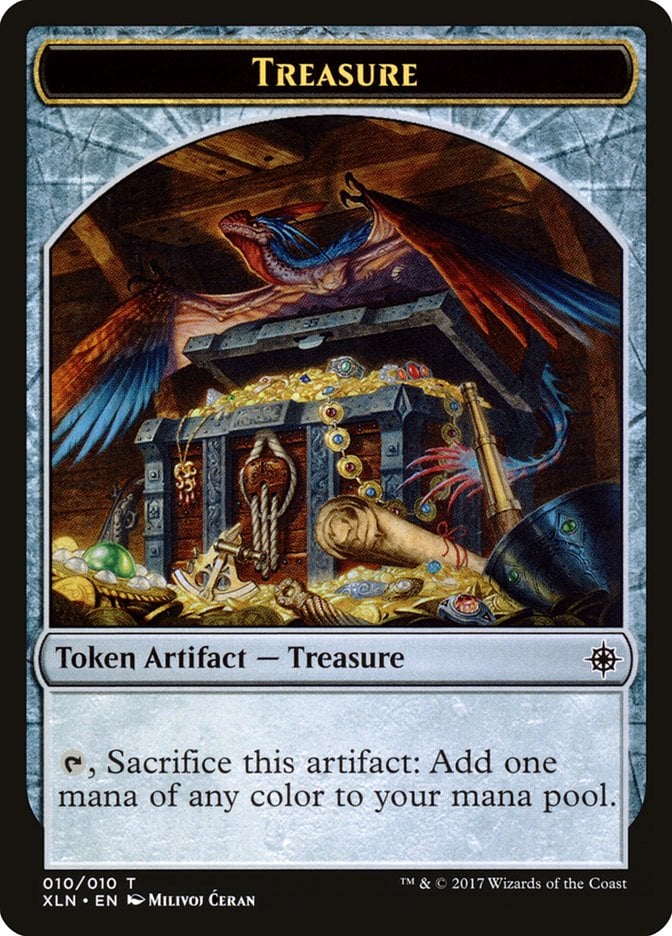
If the improvise mechanic hadn’t been in Standard in 2017, we might not have had treasure in Ixalan. Instead, we’d probably be using its predecessor: gold.
While gold and treasure are functionally the same, treasure has more flavor and flexibility. Treasure can represent different kinds of valuables, so it can easily return as a mechanic.
Treasure also plays an important gameplay role in modern Magic design. Mana-producing creatures and artifacts provide additional mana as long as they’re on the battlefield, so the net gain these permanents provide can be pretty high. Conversely, spells like Seething Song only provide more mana for a single turn. Like sagas, treasure serves as a middle ground: you can invest resources early to get a one-time mana boost on a later turn.
Treasure has already reappeared several times in just a few short years, and I wouldn’t be surprised if we see it again soon!
#2 — Vehicles
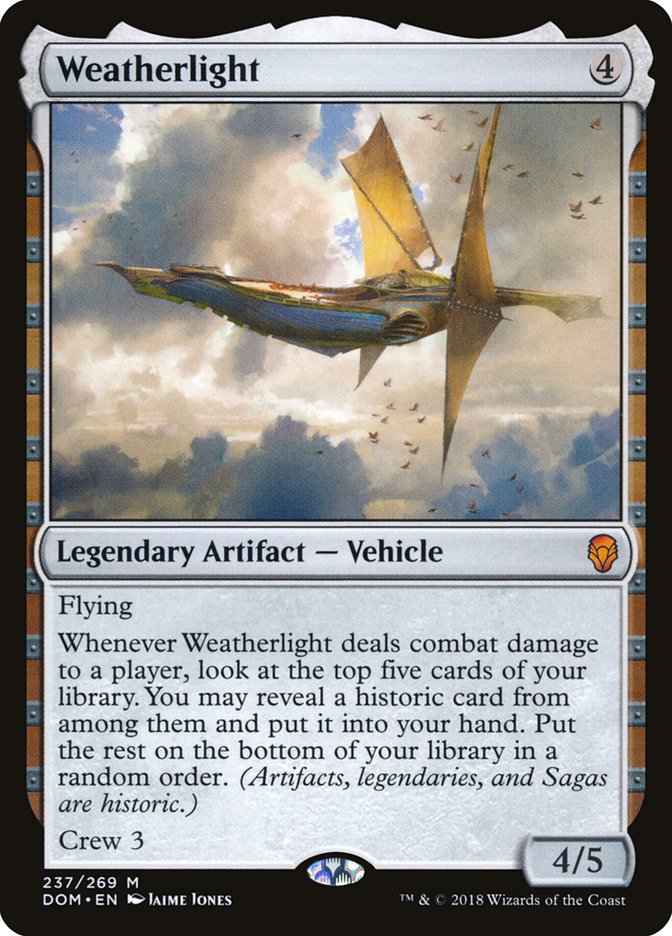
For years, Magic experienced design challenges when it came to depicting vehicles. Predator, Flagship and Skyship Weatherlight are both vehicle-concepted legendary artifacts, but they couldn’t interact with creatures in combat. You couldn’t have your ship charge forth toward a player, and no amount of burn spells could melt them!
Another approach was to treat vehicles like regular creatures, similar to walls. But this wasn’t quite right; a wall doesn’t need a driver, but a vehicle sure does.
The vehicles printed in Kaladesh block finally functioned like real vehicles: they were just artifacts until creatures got behind the wheel. Vehicles were such a hit that they quickly returned for Ixalan as pirate ships. They came back in Dominaria, and in War of the Spark, and in Throne of Eldraine.
Vehicles are here to stay. We’ll just have to wait and see what form they take next!
#1 — Transform
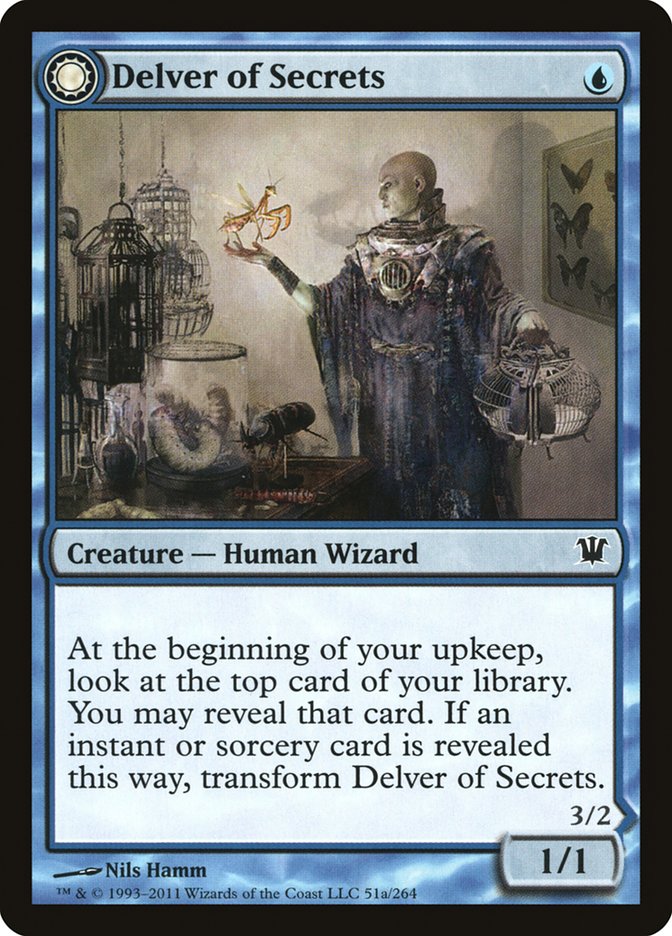
Innistrad block, Magic Origins, Shadows Over Innistrad block, Ixalan block, and Core Set 2019. What do all these sets have in common? Transform cards!
One of the strengths of this popular mechanic is that it allows permanents to change characteristics. Counters don’t offer quite enough flexibility when you’re designing Werewolves or cards that change types. You see this best with Ixalan’s execution of transform, when non-land cards become lands.
Transform is also a great medium for storytelling. Ixalan’s transform cards depicted the start of your journey and your eventual destination. In fact, transform is so good at expressing a narrative that it was used to tell the story of just one creature (Nicol Bolas) in Core Set 2019! Like with Magic Origins’ five transform cards, the mechanic did a fantastic job of portraying a character’s spark igniting.
Lastly, there’s much more “real estate” available for rules text when you can use both sides of a card. A card like Primal Amulet might not be possible without transform!
Eldritch Moon’s transform variant, meld, offered a tease of what’s possible for the second face of a Magic card. I have a feeling we’ve only seen the tip of the iceberg with what transform has to offer.
A Hundred More
Thanks for reading! Do you agree with my picks? What other mechanics are your favorite? Let me know with a tweet at @bradleyrose!
Here’s to another 100+ mechanics for Magic’s next decade. Cheers! Catch you in 2020.

Bradley is a co-host of a weekly Magic: The Gathering design podcast, Beacon of Creation. He was among the Top 101 contestants in Wizards of the Coast’s Great Designer Search 2. He enjoys crafting custom Magic product experiences, like Archfrenemies, and building Commander decks with creative constraints.

